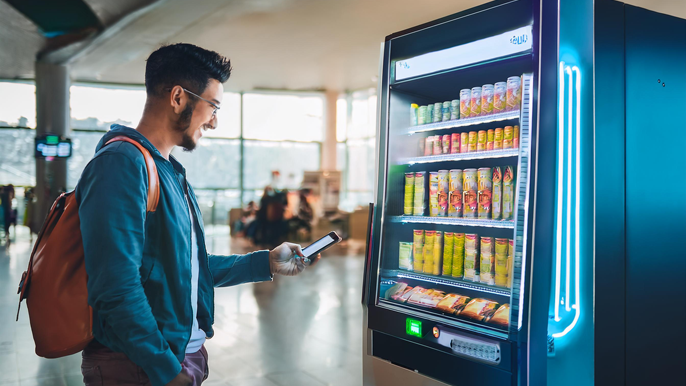Digital Vending Systems: Transforming the Future of Automated Retail

The vending machine industry has undergone a significant transformation with the advent of digital technology. Digital vending systems are at the forefront of this revolution, offering enhanced user experiences, improved operational efficiency, and new opportunities for businesses to engage with customers. This article explores the innovations in digital vending, their benefits, and how they are shaping the future of automated retail.
Table of Contents
- Introduction to Digital Vending Systems
- Benefits of Digital Vending Systems
- Key Features of Modern Digital Vending Machines
- Impact on Consumer Experience
- Integrating Digital Vending into Business Strategies
- Future Trends in Digital Vending
- Conclusion
Introduction to Digital Vending Systems
Digital vending systems represent the next generation of automated retail solutions, combining traditional vending capabilities with advanced technologies such as touchscreens, cashless payments, and real-time data analytics. These systems are not only dispensing products but also collecting valuable data, enabling personalized interactions, and providing businesses with insights to optimize their operations.
Benefits of Digital Vending Systems
Implementing digital vending systems offers numerous advantages:
- Enhanced Customer Engagement: Interactive displays and personalized promotions attract and retain customers.
- Operational Efficiency: Remote monitoring and inventory management reduce downtime and improve restocking processes.
- Cashless Transactions: Acceptance of mobile payments and cards caters to the increasing preference for cashless shopping.
- Data Collection: Real-time data on sales and consumer behavior aids in strategic decision-making.
- Flexibility: Easy updates to product offerings and pricing without physical modifications.
Key Features of Modern Digital Vending Machines
Modern digital vending machines come equipped with a variety of features that set them apart from traditional vending solutions.
Touchscreen Interfaces
- User-Friendly Navigation: Intuitive menus and product browsing.
- Advertising Opportunities: Display ads and promotions directly on the machine.
Cashless Payment Systems
- Mobile Wallet Integration: Support for Apple Pay, Google Wallet, and other mobile payment platforms.
- Credit and Debit Card Acceptance: Broadens the customer base by offering multiple payment options.
IoT Connectivity
- Remote Monitoring: Track machine status, inventory levels, and sales data in real-time.
- Predictive Maintenance: Identify potential issues before they lead to machine downtime.
Personalized Experiences
- User Profiles: Customers can create accounts for personalized recommendations and loyalty rewards.
- Interactive Content: Games and social media integration to enhance engagement.
Impact on Consumer Experience
Digital vending systems significantly enhance the consumer experience by providing:
- Convenience: Quick and easy transactions with minimal wait times.
- Product Variety: Ability to offer a wider range of products, including non-traditional vending items.
- Customization: Tailored promotions and suggestions based on consumer preferences.
- Accessibility: Multilingual support and ADA-compliant interfaces make them accessible to a broader audience.
Integrating Digital Vending into Business Strategies
Businesses looking to leverage digital vending systems should consider the following strategies:
- Location Analysis: Place machines in high-traffic areas to maximize visibility and sales.
- Product Selection: Offer products that cater to the specific demographics of each location.
- Data Utilization: Use collected data to adjust inventory, refine marketing efforts, and improve customer service.
- Partnering with Experts: Collaborate with experienced providers like digital vending systems from Intelligent Vending to ensure optimal implementation and support.
Future Trends in Digital Vending
The digital vending landscape continues to evolve, with several trends on the horizon:
Artificial Intelligence and Machine Learning
- Predictive Analytics: AI algorithms will predict consumer behavior to optimize stock levels and product offerings.
- Enhanced Personalization: Machine learning will enable more accurate customer profiling for targeted promotions.
Augmented Reality (AR)
- Interactive Shopping: AR can provide immersive experiences, allowing customers to virtually try products before purchasing.
Sustainable Practices
- Energy-Efficient Machines: Development of vending machines with lower energy consumption.
- Eco-Friendly Products: Offering sustainable and ethically sourced products to meet consumer demand.
Expanded Product Offerings
- Non-Traditional Items: Sale of electronics, cosmetics, and other high-demand products through vending machines.
- Customized Products: On-demand production of personalized items, such as freshly prepared meals or customized drinks.
Conclusion
Digital vending systems are revolutionizing the automated retail industry by offering enhanced functionality, improved customer experiences, and valuable business insights. As technology continues to advance, these systems will become even more integral to retail strategies, providing innovative ways to connect with consumers and streamline operations.
Businesses that embrace digital vending solutions now will be well-positioned to stay ahead of the competition, meet evolving customer expectations, and capitalize on new revenue opportunities. The future of vending is digital, and the possibilities are limitless.
